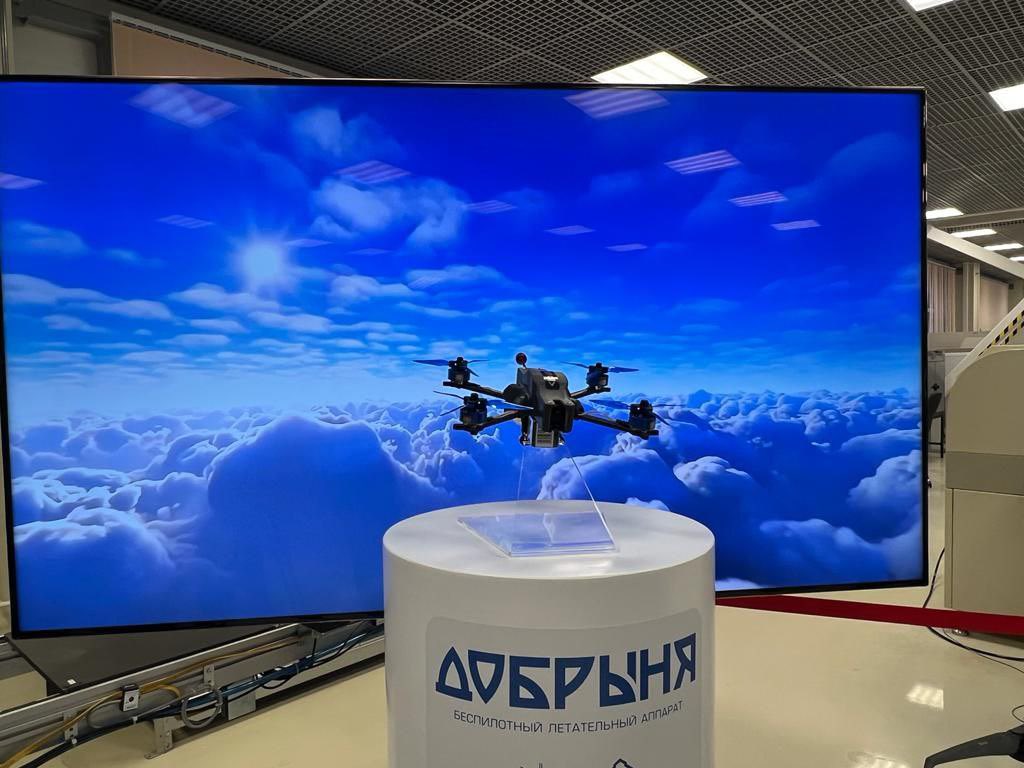A new Russian unmanned aerial vehicle (UAV), introduced to meet immediate minor battlefield roles, came under heavy criticism for being a Chinese copy and having limited indigenous components.
Russian defense commentators pointed to the Dobrynya quadcopter from Almaz-Antey as having many components and electronics from China.
However, the company and other Russian commentators countered by pointing to how Russian self-sufficiency in key aviation components electronics is bound to increase with techno-industrial experience and that this was just the first model.
While Russia leads in sophisticated military technologies, it has remained historically weak in electronic components that involve computer circuitry, processors, circuit boards, and chips.

Dobrynya – Russian Copy of Chinese Drone?
Russia’s Almaz-Antey, its leading missile maker, displayed the Dobrynya quadcopter late in November, with reports saying it planned to manufacture 1000 such drones by the end of the year.
Both Russia and Ukraine depend heavily on the Chinese company’s mass-produced commercially available drones for elementary battlefield tasks like surveillance, reconnaissance, and primarily artillery fire correction.
EurAsian Times had reported that even the newly mobilized 300,000 Russian recruits were taught drone piloting and anti-drone warfare as a significant component of their curriculum.
The use of Chinese drones is so abundant that even official videos by the Ministry of Defence (MoD) of the recruits’ training show DJI drones being operated.
However, Russian social media forums discussing defense and military affairs erupted last week when observers commented that Dobrynya was a “Chinese-made Nazgul Evoque F5 quadcopter in a Russian frame.”
One comment understands Russia’s fledgling attempts to introduce microelectronic production in the country from scratch and how indigenization will be a gradual, slightly time-consuming process.
“But what you definitely don’t need is to copy the Chinese Nazgul drone and call it Dobrynya,” the comment said.

“It is probably impossible to make it completely Russian, but Almaz-Antey will be able to establish mass production of batteries, engines, propellers, communication units, remote control, and video cameras – if there is demand. Now the first drones will be given to customers, they will receive feedback and finalize them. This is normal engineering/design activity,” said one comment.
“It can be designed by us, get everything that can be made in Russia, including on 3D printers, and buy the rest abroad. It’s not a perfect solution, but for now, it’s exactly what needs to be done,” the commentators added.
Russian Drone Maker Responds
Almaz-Antey soon responded, quelling doubts and assuring citizens of a gradual increase in domestically-made drone components. RIA Novosti quoted Yegor Shcherbakov, chief designer at the Obukhov Plant that produces the drone, pointing out the that the drone has a significant share of domestic components like a “flight controller, frame, boards, software, case, wires, printed circuit boards (PCB) and electric motors.”

Imported components like a camera, video and telemetry transmitters, engine speed controller, and antennas are found in the initial series of drones.
“Both domestic and imported engines and batteries were installed,” Shcherbakov said, adding it was natural to have components that are “easier to buy than to manufacture (with) their share constantly decreasing.”
No Problem with Copying or Sourcing
Many Indian defense scientists and military experts practically suggest using foreign components or technology initially to maintain defense preparedness while gradually developing homegrown substitutes.
“Reinventing the wheel” is an unnecessarily emotional endeavor to satisfy a country’s vanity that can be painfully costly and time-consuming and risks defense preparedness.
Chinese themselves have actively copied everything they lay their hands on, including Russia’s own defense platforms that Beijing buys. Russia is in a similar position when it comes to electronics.
“Russia urgently needs a mass-produced drone under tight deadlines, and the effort needs encouragement, not criticism,” said another comment.
Other criticisms regarding the high price of the Dobrynya compared to Chinese drones too are unfounded, as they ignore Chinese global predominance in electronics manufacturing.
Over the last four decades, it has acquired the advantage with vast, cheap, skilled labor backed by massive subsidies to factories and companies to which Western majors have outsourced manufacturing.
The EurAsian Times earlier reported how this international economic-commercial-industrial dynamic had led to a situation where a camera on a live bird-based drone detection system used by the Indian Army in Ladakh to detect Chinese drones had turned out to be from China itself.
- The author can be reached at satamp@gmail.com
- Follow EurAsian Times on Google News




